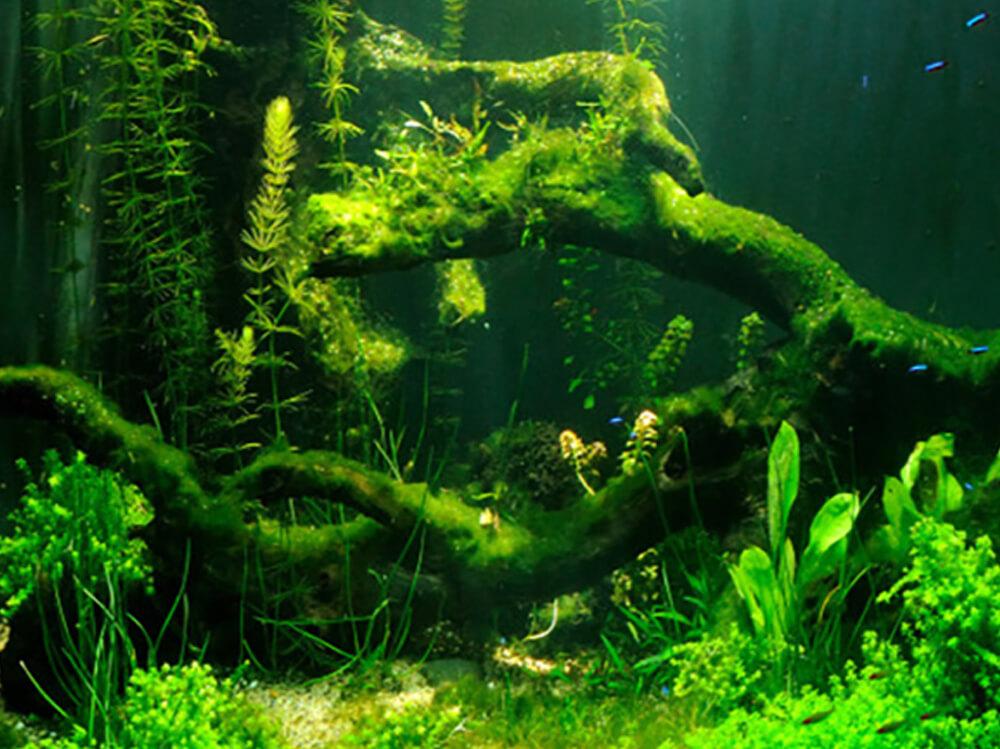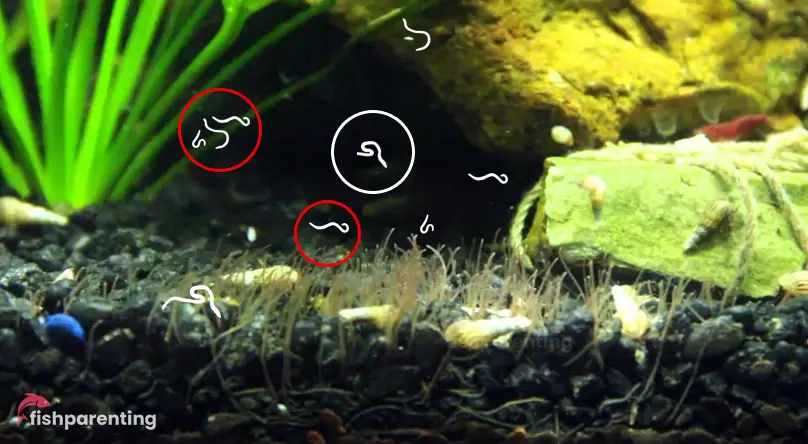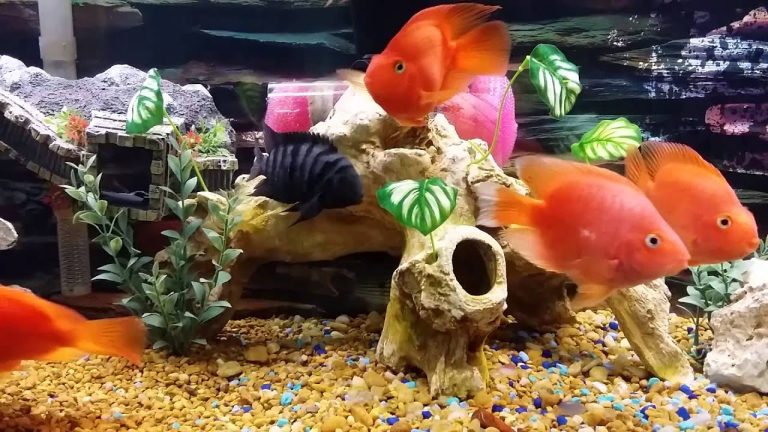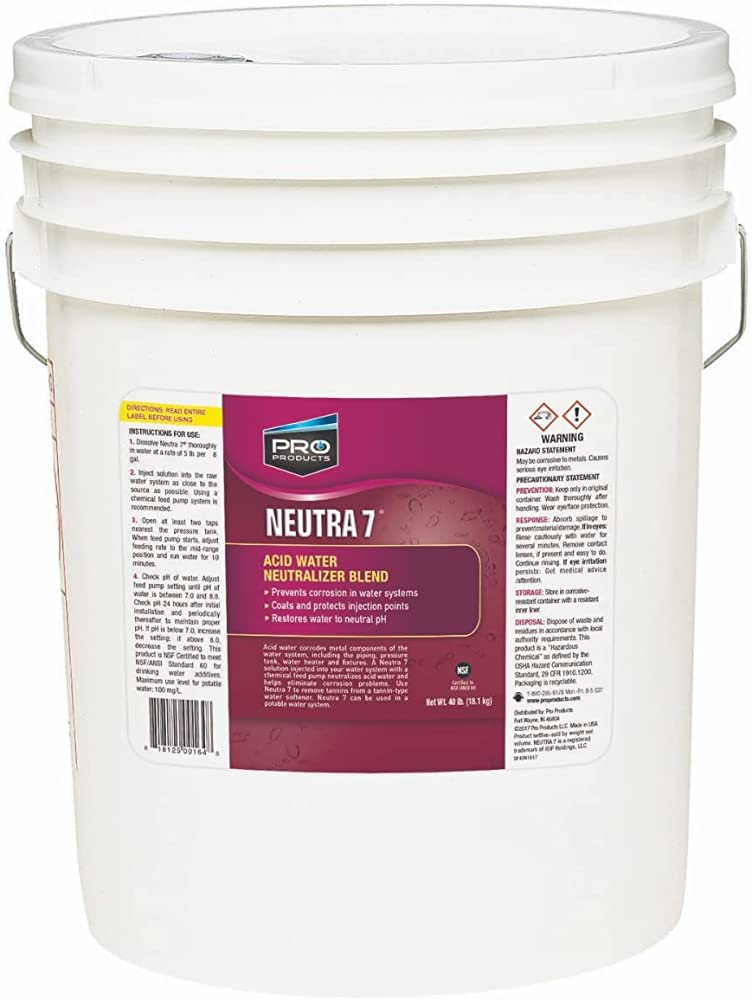Eliminating Black Algae in Your Fish Tank: A Complete Guide
To get rid of black algae in fish tank, use a algae scraper and brush to remove as much of the algae as possible, then clean the tank thoroughly and reduce the amount of light it receives. Black algae infestations in fish tanks can be tricky to deal with.
Despite their name, black algae are not actually algae, but rather colonies of black bacteria known as cyanobacteria. These bacteria can thrive in areas of the tank with low water flow, low oxygen levels, and excess nutrients. Black algae can be harmful to fish and can cause damage to plant life in the tank as well.
If you’ve noticed black algae growing in your fish tank, it’s important to take action to remove it as soon as possible. Fortunately, there are several steps you can take to get rid of black algae in your fish tank and prevent it from returning in the future.

Credit: www.swelluk.com
Understanding Black Algae: Types And Causes
The Different Types Of Black Algae That Can Grow In Your Fish Tank
Black algae is a common problem faced by many fish tank owners. Understanding the different types of black algae is crucial in identifying the appropriate solution. The following are the types of black algae that might be present in your fish tank:
- Blue-green algae: Also known as cyanobacteria, this type of algae is not really an algae but a bacteria that photosynthesizes. Blue-green algae have a slimy texture and are quite easy to recognize.
- Red algae: This type of algae, also known as rhodophyta, is red or purple in color and usually grows on the sides of the tank.
- Black beard algae: Also known as brush algae, black beard algae are bushy and grow on plants and decorations in the fish tank.
Common Causes Of Black Algae In Fish Tanks
Identifying the cause of black algae in your fish tank will help you to prevent its growth. Here are the common causes of black algae:
- Poor water quality: Poor water quality can be due to lack of maintenance, overfeeding, and overstocking the fish tank.
- Insufficient lighting: Algae thrive in areas with a lot of light. Therefore, insufficient lighting can cause the growth of black algae to occur.
- Low co2 levels: If co2 levels in the fish tank are too low, the plants won’t be able to grow and compete with the growth of algae, resulting in the growth of black algae.
- Presence of dead organic matter: Dead organic matter may include fish food, dead fish, and dying plants, which decompose in the tank and release nutrients that are food for black algae.
How To Identify Black Algae In Your Fish Tank
Identifying black algae in the initial stages is essential to control its growth. Here are some ways you can identify its presence in your fish tank:
- Appearance: When black algae grow, they appear as small, dark dots on the surfaces of your fish tank, including the glass, plants, and decorations.
- Texture: Black algae are coarse and rough, which can make it challenging to remove them from surfaces.
- Growth rate: Black algae grow at a faster rate than other types of algae, which means that they can take over a fish tank quickly.
Understanding the types of black algae, identifying their causes, and knowing how to identify them in your fish tank are critical steps to preventing their growth. By following the above guidelines, you can maintain a healthy and thriving fish tank that is free from black algae.
Preventing The Growth Of Black Algae
Maintaining Appropriate Water Quality And Conditions
The growth of black algae in fish tanks is primarily caused by poor water conditions. Therefore, maintaining appropriate water quality and conditions can prevent the growth of black algae. Here are some tips to keep your aquarium water clean and healthy:
- Conduct regular water tests to monitor the levels of ammonia, nitrate, nitrite, and ph. These tests ensure that your aquarium water is within the safe and optimal range for your fish.
- Regularly perform water changes to remove excess nutrients, toxins, and debris from the water. Changing 20-25% of the water every week or two will help keep the water healthy and fresh.
- Ensure proper filtration is installed in your aquarium. Having proper filtration ensures the water in the tank remains clear and free from pollutants.
Proper Lighting And Its Effect On The Growth Of Black Algae
Lighting can play a significant role in the growth of black algae in fish tanks. Too much light can promote the growth of algae, while too little light can cause the plants to die and release nutrients that black algae feeds on.
Here are some basic lighting tips to help you prevent the growth of black algae:
- Avoid leaving your aquarium lights on for extended periods. Led aquarium lights can be set to come on for 8-10 hours per day and then switch off at night.
- Regularly clean the aquarium glass to ensure that light penetrates the water appropriately.
- Use a timer to regulate your aquarium light schedule, and stick to it. The regularity of the light cycle will provide a stable environment for the plants and lower the risk of algae growth.
Introducing Algae Eating Fish To Your Aquarium
Adding the right fish to your aquarium can help prevent the growth of black algae. Algae eating fish can help lower the amount of algae in your fish tank, providing a natural solution to keep your fish tank clean and healthy.
Here are some common algae eaters to consider for your aquarium:
- Plecos: These algae eating fish are popular among aquarium enthusiasts. They can grow to a foot long, so make sure you have enough space in your aquarium.
- Siamese algae eaters: These fish eat black algae and other types of algae in your aquarium. They are hardy fish that can get along with other fish species.
- Nerite snails: These small snails are popular in aquariums for their efficiency in cleaning up algae. They will not eat plants and are suitable for small tanks.
By following these simple tips, you can prevent the growth of black algae in your aquarium and maintain the perfect environment for your fish.
Eliminating Black Algae From Your Fish Tank
No aquarium owner ever wants to see black algae take over their fish tank. It can be particularly challenging to get rid of, but there are ways to eliminate it. Here are some methods you can use to remove black algae from your fish tank.
Removing Black Algae Manually Using A Scrubber
One way to eliminate black algae from your aquarium is to use good ol’ elbow grease. Follow these steps:
- Turn off all the equipment in your aquarium (lights, filter, air pump, etc.)
- Use a scraper or a scrubber to gently scrub the affected areas. Be careful not to scratch the glass or acrylic of your aquarium.
- Carefully remove the dislodged black algae.
- Use a siphon to remove the algae debris from the bottom of the tank.
- Do a partial water change to remove any remaining algae debris.
Using Algaecides And Other Chemical Treatments To Kill Black Algae
Another option to eliminate black algae is to use algaecides or other chemical treatments. However, be aware that using these methods has some downsides, such as potentially killing other plants or animals in the tank. Follow these guidelines if you choose to use chemical treatments:
- Always read the labels and instructions carefully before use.
- Choose an algaecide specifically designed to kill black algae.
- Remove any animals or plants from the aquarium before using the treatment, as they might be harmed.
- Turn off the filter and air pump, and don’t turn them back on until the treatment is complete.
- Do not exceed the recommended dosage, as this can be harmful to your fish.
Further Precautions Needed To Ensure The Black Algae Does Not Come Back
Once you have removed black algae from your aquarium, the last thing you want is for it to return. Here are some tips to help prevent black algae from growing in your fish tank:
- Monitor the lighting in your aquarium and make sure it is not too strong or too weak.
- Keep any algae-eating fish in the tank well-fed.
- Ensure your filtration system is working correctly.
- Perform regular water changes and tank maintenance.
- Avoid overfeeding your fish, as excess food can contribute to the growth of black algae.
By following these methods and precautions, you can eliminate black algae from your fish tank and prevent it from coming back.
Maintenance And Regular Monitoring
Keeping Up With Regular Maintenance To Prevent The Growth Of Black Algae
Maintaining a clean and healthy tank is crucial to preventing black algae growth. Here are some key points to help you keep up with regular maintenance:
- Perform weekly water changes of at least 25% to remove any excess nutrients and debris that may contribute to black algae growth.
- Use a good-quality filtration system that can effectively remove any excess waste and debris from the water.
- Scrub the tank’s sides, decorations, and rocks during water changes to remove any built-up algae or debris.
- Add live plants or green algae eaters to your tank to absorb excess nutrients and reduce the risk of black algae growth.
The Importance Of Monitoring Your Fish Tank For Any Signs Of Black Algae Growth
Regular monitoring is essential to catch black algae growth early before it becomes a major problem. Here’s what you need to keep in mind when monitoring your fish tank:
- Keep a close eye on the tank’s walls, rocks, and decorations for any signs of black discoloration or slimy-looking areas.
- Check the water quality frequently to ensure the parameters are within the recommended range.
- If you notice any unusual changes in your tank’s appearance or your fish’s behavior, investigate the potential cause before it becomes a more significant issue.
Troubleshooting Common Problems That May Arise
Despite your best efforts, you may encounter black algae growth in your tank. Here are some potential issues to watch out for and how to troubleshoot them:
- High nutrient levels: High nutrient levels in the water can lead to black algae growth. Perform more frequent water changes or reduce the amount of food you’re feeding your fish.
- Poor lighting: Inadequate or poor lighting can lead to the growth of black algae. Consider upgrading to a more powerful light or adjusting the duration and intensity of your current light.
- Improper water flow: Stagnant water can contribute to the growth of black algae. Ensure that your filtration system is working correctly and that there’s adequate water flow in the tank.
Regular maintenance and monitoring are crucial factors in preventing the growth of black algae in your fish tank. By keeping up with these practices and troubleshooting any potential issues, you can maintain a clean and beautiful aquarium for your fish to thrive in.
Frequently Asked Questions For How To Get Rid Of Black Algae In Fish Tank
How Does Black Algae Form In A Fish Tank?
Black algae form in fish tanks due to poor aquarium maintenance and excess light availability.
What Are The Harmful Effects Of Black Algae In A Fish Tank?
Black algae can cause health issues to fish, reduce oxygen levels in water, and ruin the aesthetic appeal of the aquarium.
How Can I Get Rid Of Black Algae In My Fish Tank?
Remove the affected plants, increase water changes, reduce excess light and add a uv sterilizer to get rid of black algae.
Can I Prevent The Growth Of Black Algae In An Aquarium?
Yes, ensure proper aquarium maintenance practices such as regular water changes, reduced light, and proper filter maintenance, will prevent black algae growth.
Conclusion
Getting rid of black algae in your fish tank can be a daunting task but following the steps outlined in this article can make it achievable. Proper maintenance and cleaning of your tank, regular water changes, and careful selection of fish and plants can prevent the growth of black algae.
Remember to avoid using harsh chemicals and opt for natural remedies such as snails or algae-eating fish. Consistency is key when it comes to preventing and treating black algae in your fish tank. By implementing these tips, you can maintain a healthy and vibrant aquarium that will be a joy to behold.
Don’t forget to enjoy the process of maintaining your fish tank and creating a natural habitat for your fish. Happy fish keeping!






